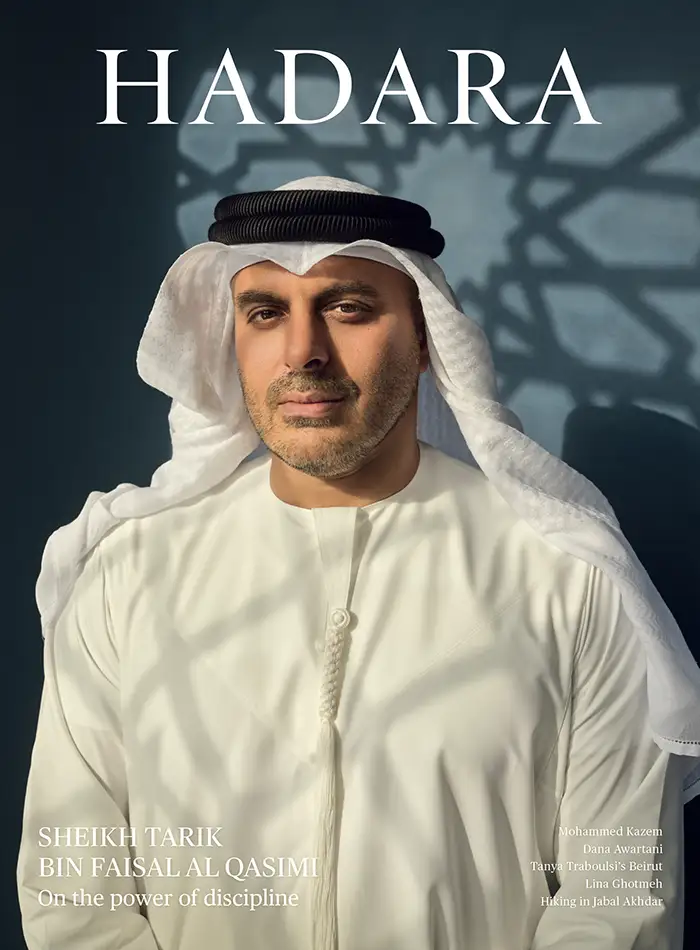Time Travel
Adventure writer Alice Morrison, author of three books on Morocco, guides us through the Imperial city of Fez, finding new treasures even as the past looms large.
I first went to Fez when I was 19. My companion and I had taken the cheap bus from Tangier. After a long, hot and noisy journey—we shared the bus with chickens—we stuttered up a hill, and there was the city, lying golden in the evening light below us. It was nestled in the hills, and as we crawled down towards the famous blue gate, the call to evening prayer rang out from a hundred minarets, scattering flocks of pigeons into the sunset sky.
The city lingered in my mind. When I went back to explore it for my BBC2 series, Morocco to Timbuktu, the romance of that first meeting was deliciously still there. I have since been back many times, always finding something new to taste or see or experience. As Marrakech throws itself into the arms of the world and gets bigger and brasher, Fez looks inward and treasures its riches. Fez is my eat, shop, pray destination in Morocco.
I walk into the old city through Bab Bou Jeloud, the blue-tiled gate at the top of the hill. The monumental, triple-arch gate, built in 1913 during the French protectorate, remains the main western entrance to the historic medina, and leads on to a large street with cafés on either side. At a split in the road, I spot two large bubbling pots presided over by a cheerful cook with a luxurious moustache. In one pot, sheeps’ heads are simmering. “Come, come. Eat, eat,” the chef encourages. I thank him but save the heads for a braver day. The road now divides into Talaa Kbira and Talaa Saghira, big Talaa and little Talaa. Talaa means ‘to rise’ in Arabic and these two long streets take you from the top of the town all the way down until you start to smell the tanneries and come out to the Fez River.
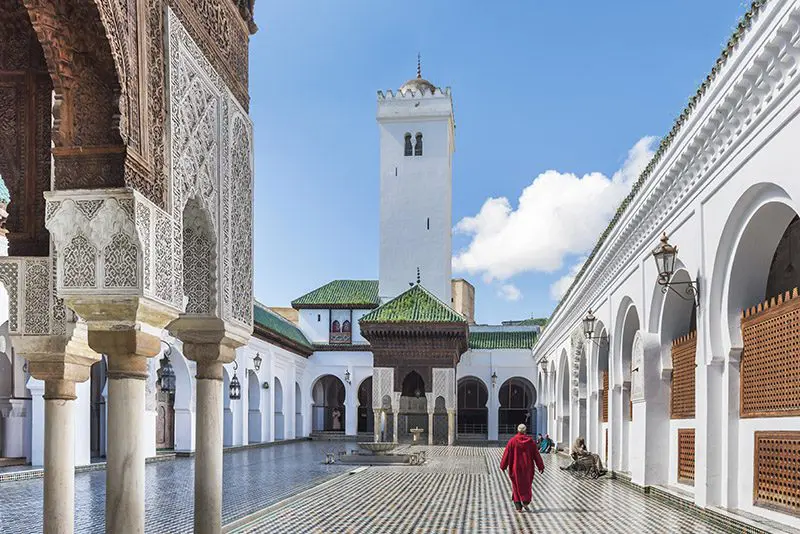
Al-Qarawiyyin University, founded by Fatimi al-Fihri in 859 CE, is the oldest continually operating university in the world, according to UNESCO. Photo: Getty Images.
Every step feels like it takes me further back in time. The souk is now the oldest remaining covered souk in the world, since the destruction of Aleppo’s. It is pedestrian and donkey access only, but the streets are so narrow that I find myself queuing to squeeze past the small shops and stalls, their wooden shutters open to reveal interiors stuffed with everyday goods and tourist treasures. I buy a couple of swinging gold tassels, unable to resist their glitter.
Even narrower alleyways, branching off to the sides, give out on to old caravanserais. These open courtyards, with shops lining the ground floor and accommodation above, were used by merchants in the days of the great caravan trade between West Africa and Europe, which enriched the city. I spent a memorable evening sleeping upstairs next door to a family whose craftsman father worked below. There are no camels now, but a healthy trade still goes on in leather, carpets, and fine pottery.
My favourite has an ancient tree in the middle that has been repurposed as a display cabinet and is eerily hung with life-sized human hands made from the finest bone china and delicately decorated with leaves and flowers. This genre of pottery is called “female” and is specific to the city.
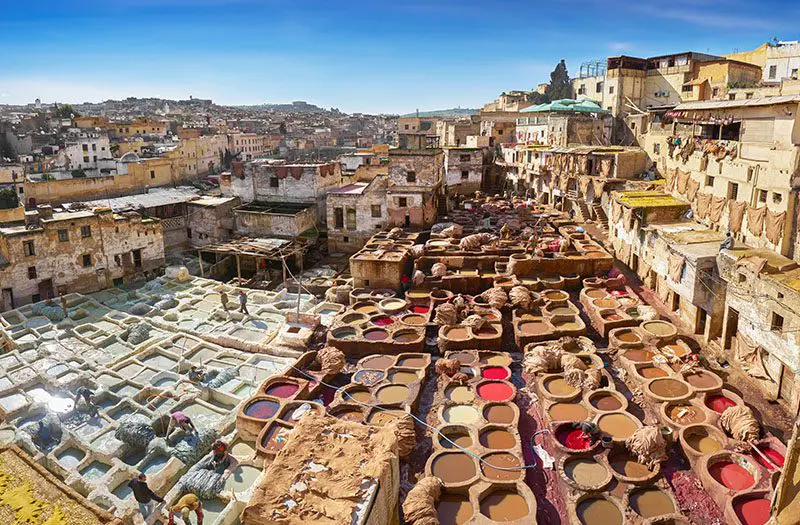
Chouara Tannery is the largest and one of the oldest in Fez. The tanneries operate much as they have always done. Round stone vessels are filled with liquids that soften and colour the hides. Photo: Alamy.
Fez is also famous for its buttery leather. You will smell the tanneries before you see them. The hides are treated with a heady combination that includes pigeon droppings swirled in giant vats. The tanneries have been restored but the process remains the same, and I marvel how the men can stand to work in the heat and the stench.
Fez is an Imperial city—one of Morocco’s four historical capitals—it has been the country’s capital for hundreds of years, most recently until 1912. It is also an important Islamic centre for North and West Africa. As a child, I collected shells and stamps, and that instinct revives as I immerse myself in the gorgeous Islamic art heritage that surrounds me. I count the ornate tiled water fountains for drinking and washing before prayer which are built into the walls every hundred metres or so. I look up and photograph the soaring minarets. I search out the grand wooden and brass doors to the mosques and Quranic schools surrounded by religious inscriptions.
At the bottom of the hill, above the tanneries, lies Al-Qarawiyyin University, which was founded by Fatimi al-Fihri in 859 CE. It is the oldest continually operating university in the world, according to UNESCO. Sitting in the café opposite, sipping a creamy nuss-nuss (half coffee, half milk), I watch a group of young West Africans dressed in impeccable white robes and skull caps as they earnestly discuss a fine point of Islamic law. I am in the Fez time machine, skipping back centuries.
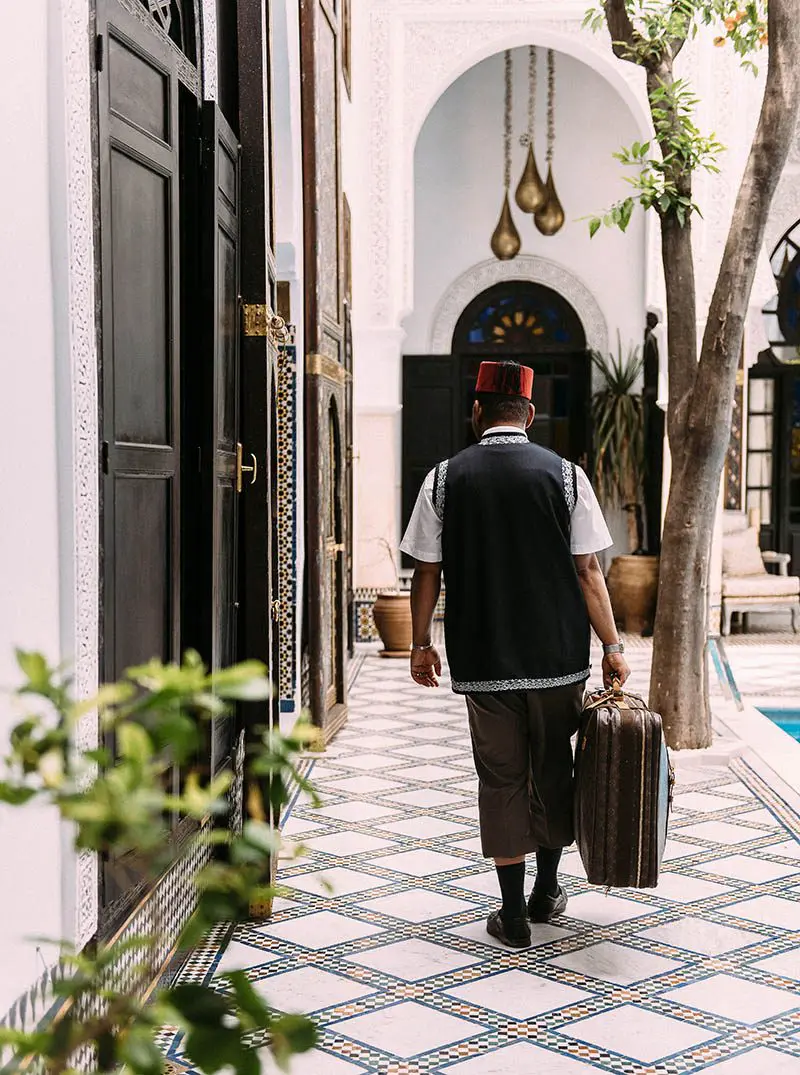
La Maison Bleue, a traditional hotel and riad. Photo: courtesy of Riad/La Maison Bleue.
The adjoining library was restored in 2016 by Moroccan architect Aziza Chaouni and houses priceless manuscripts. Revelling in all this ancient and modern girl power, I go in and am transfixed by one of the oldest collections of the sayings of the Prophet Muhammad and a luminous ninth century Quran.
I’ve done my shopping and praying so it is time for food. I have been given a top tip: An Amal Ngadi food tour. “When you arrive, you are so startled and in awe of Fez that you wouldn’t know what’s good or bad,” she says. As we are walking, Amal stops at a stall: “these are the best sardines in town.” The stallholder throws a handful of the fish onto the grill. They are fresh and delicious.
I head for another favourite eatery, Fondouk Bazaar, for a salad of sweet and sour cu- cumber, harissa and sesame paired with crispy egg samosas (briks), an orange cheesecake and some fresh hibiscus juice. The bill is very reasonable and the terrace is pretty.
Every city has its local secrets and I think Fez’s is the Sidi Harazem baths. When it gets too hot and life gets too much, Fassians head out—the bath station is 12 kilometres from the medina—to take the waters. Designed in the 1960s by French architect Jean-François Zevaco, and following careful restoration by Aziza Chaouni that started in 2017, the thermal baths are a masterpiece of modernist architecture. Overloaded by the sensory deluge of the city, a wallow in warm, sulphuric water is exactly what I need.
I love the vibrancy of Marrakech and its tantalising glimpse of the desert beyond. The laid-back beach vibe of Essaouira is enchanting. Chefchaouen wins the most-Instagrammable prize, and Tangier is full of intrigue. But Fez is special. Why? Fez is for connoisseurs.
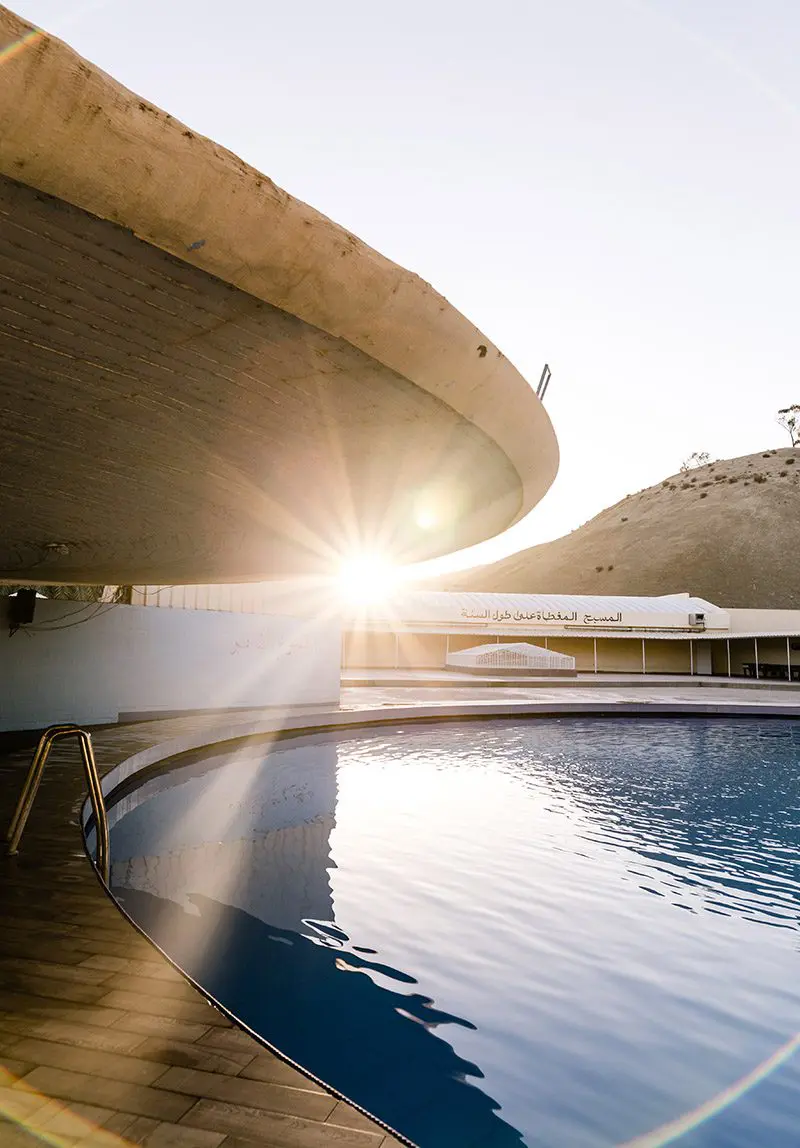
Top photo of The Royal Palace: Larry Williams & Associates/Getty Images.




